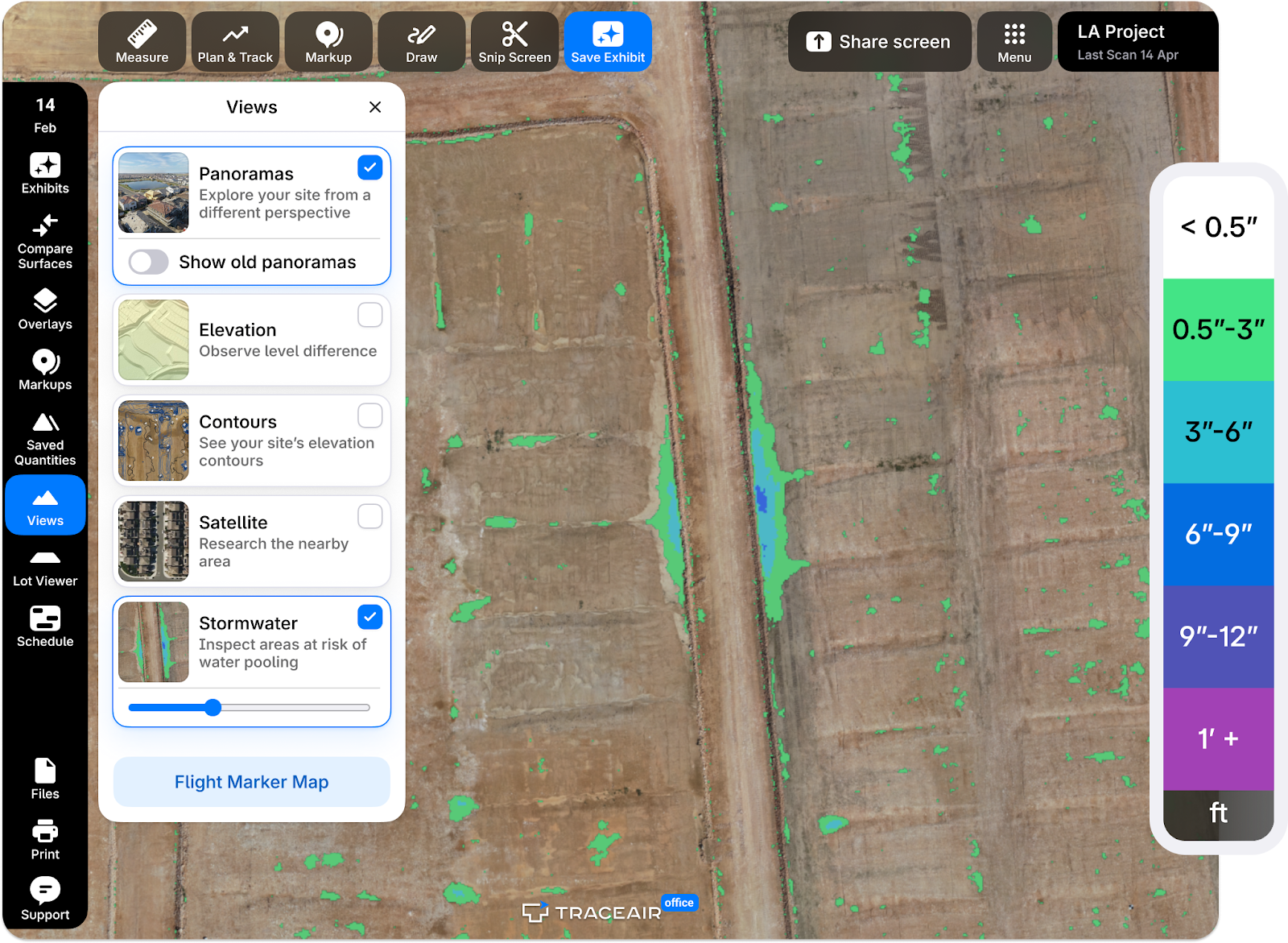Storm season isn’t just about weather—it's about preparation. For builders and developers, effective stormwater management can be the difference between smooth progress and unexpected delays, fines, or damage. In TraceAir’s latest webinar, Rich Miller, Regional Environmental Manager, shared on-the-ground insights drawn from both the private sector and his tenure with the Florida DEP.
Here are some of the key takeaways from our conversation:
Stormwater compliance comes with unique challenges
Stormwater permitting often requires both ERP and NPDES approvals—each with its own timeline, agency, and compliance standards. Missing or mismanaging either can stall construction, trigger penalties, or delay revenue. Staying on track means keeping permits aligned and teams in sync from the start.
Regulatory standards can vary widely between state, county, and municipal agencies, creating a moving target for compliance. What satisfies one inspector may not meet another’s expectations. In this environment, detailed records and visual documentation aren’t just helpful—they’re your strongest defense.
Unpredictable weather adds another layer of pressure, especially in storm-prone regions like Florida. Regulations don’t pause for rain—builders are expected to maintain full compliance, even during named storms. The burden is on the developer to anticipate and prepare for impact.
As Rich put it, “‘This is Florida—you should’ve known.’ That’s what the regulators will say.”
Start before the storm: proper drainage starts at design
Even the most thorough site plans can have blind spots when it comes to stormwater management. “Don’t assume the plans are perfect,” Rich cautioned. Early design and grading assumptions can miss key drainage risks—especially on sloped or vegetated sites. Tools like TraceAir’s Closed Depressions Report help teams identify low-lying areas likely to accumulate water, allowing proactive adjustments before construction begins.
The best time to catch drainage problems is before breaking ground, not after. “It’s okay to question the engineered plans,” Rich advises. “Go back to the drawing board if needed—before the first scoop of dirt.”

Permitting is a moving target—documentation is your defense
In Florida, it's common to navigate ERP, NPDES, and a patchwork of local rules. Inspectors’ expectations vary, which makes consistent, visual documentation critical. Rich emphasized that “your only defense is strong documentation,” especially when inspectors are looking for patterns of non-compliance.
TraceAir helps here too, generating time-stamped, visual records that align with your SWPPP and validate installed BMPs. This audit-ready documentation is a lifeline during inspections or post-storm investigations.
Site intelligence removes the guesswork
TraceAir’s stormwater tools go beyond visuals—they provide real, decision-ready data:
- Visual Documentation Over Time - Drone scans provide a clear record of site conditions at regular intervals—ideal for proving compliance or investigating violations.
- Stormwater Simulation Tools - TraceAir’s depression analysis shows where water will pool during heavy rain, allowing teams to address risks before storms hit.
- Pad & Slope Reports - Evaluate drainage compliance lot by lot. Our platform compares actual slope against design grades to prevent ponding and inspection failures.
- SWPPP Plan Overlays - Overlay your stormwater plan directly onto the latest site scan to validate BMP placement and site phasing visually.
“TraceAir shows you what’s changed and where to act. It’s like having an up-to-date punch list for your stormwater plan.” – Kate Walker, TraceAir
What regulators look for—and how you can be ready
Rich shared an eye-opening moment from shadowing EPA inspectors: they weren't looking for perfection, but for patterns—missed inspections, gaps in documentation, and delayed responses.
What matters most is maintaining a consistent paper or digital trail that demonstrates ongoing attention to compliance. A strong track record includes regular drone scans showing site evolution, posted permits with documented SWPPP updates, and visual overlays that tie design plans to current conditions. As Rich puts it, "You can't build a pattern of non-compliance if you're in compliance."
The best time to prepare was yesterday (but it’s not too late)
With TraceAir, your team can simulate storm impacts, identify risks, and act early—whether it’s adjusting slopes, addressing buffer zones, or catching mistakes before they cascade into costly rework.
At the end of the day, “nobody’s going to get in trouble for being too prepared.”
🎥 Watch the Full Webinar
See how Rich and the TraceAir team are helping developers like you turn storm risk into a managed process. [Watch now]

